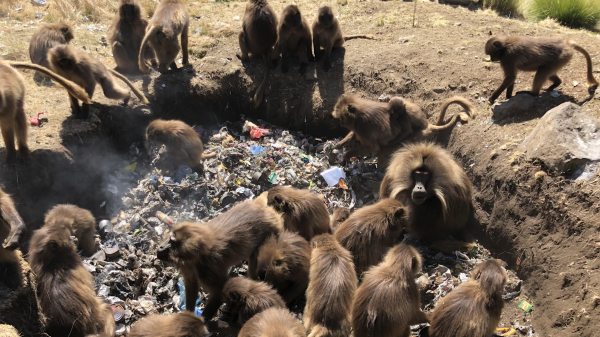A run on fossil fuels: ASU professor says climate legislation could have unintended consequences
Uncertainty surrounding legislation has potential to cause economic harm, increase carbon emissions

Pixabay image
As concerns about climate change grow, policymakers are increasingly voicing support for stricter fossil fuel legislation. Their discussions and proposals raise questions about the future of the oil and gas industry, which currently supplies most of the world’s energy needs.
But there are no definite answers to the questions being raised right now, and this ambiguity is driving oil and gas producers to react in ways policymakers may not intend.
ASU expert Michael Barnett’s research demonstrates how the uncertainty surrounding future climate legislation could cause severe economic harm and increase carbon emissions — and soon.
Barnett, an assistant professor in the Department of Finance at the W. P. Carey School of Business, studies the dynamic implications of climate transition risk on macroeconomic outcomes and asset prices.
In this Q&A with ASU News, timed for Earth Day 2024, Barnett hints that achieving carbon neutrality in the next 25 years depends on settling a variety of issues, including trillions of dollars of investment.
Here’s what he had to say:
Question: What form would new regulations on fossil fuels take? How far-reaching would they be? When would they take effect? Would an alternative infrastructure be built in time to make them realistic? What are the negative outcomes?
Answer: Many types of policies being proposed. These include policies like the renewable portfolio standards (limits on the fraction of energy coming from clean and dirty sources in the future); emissions reporting requirements; mandated automobile emissions standards; restrictions on the drilling or mining, development and production of fossil fuels like coal, oil and natural gas; required investments in green and renewable energy sources; purchasing and trading of carbon licenses for the right to emit certain levels of emissions; future target dates for achieving carbon neutrality goals and various others.
Two big examples for the U.S. are the Clean Power Plan and the Paris Climate Accord, which proposed implementing various policy mechanisms I mentioned. Many of the policies related to these issues are just starting to be proposed, with limited implementation already occurring. The long-term timelines for the policies being discussed are typically expected to occur between 2030 and 2060 for most developed countries.
In terms of being prepared for alternative infrastructure, the Princeton Net-Zero America Study suggests that achieving a net-zero goal in the U.S. by 2050 is possible. However, it will require “immediate, large-scale mobilization of capital, policy and societal commitment” with trillions of investment dollars. So, while it may be doable, it will not be easy to make it happen.
The negative costs include the potentially significant economic costs of complying with these regulations, which will hopefully be offset by the long-term benefits of avoiding economic damages from climate change and enhanced economic growth. My research has also examined unintended consequences of firms trying to optimally avoid, evade and front-run such policies and regulations.
Q: In your paper, “A Run on Fossil Fuel? Climate Change and Transition Risk,” you consider potential negative outcomes using standard economic frameworks as a basis and introduce the impacts of policy-related shocks and subsequent business decisions. What’s the conclusion?
A: The main conclusion of the analysis is simple. The expectation of transition risk, or a sudden realization of climate policy or climate-related technological innovation that will restrict the use of fossil fuels like oil and coal in the future, can lead firms to ramp up fossil fuel production now before their assets and reserves become worthless.
This effect accelerates over time as increased fossil fuel production leads to increased climate change, increasing the likelihood of a transition risk event and further incentivizing increased fossil fuel production. If this run-up occurs, prices for these fossil fuels and the stock prices of the firms that produce these fossil fuels can fall substantially.
Q: What’s at the heart of the problem?
A: The main problem in proposed future transition risk events, like mandated future climate policy restrictions, is that this ignores the basic idea that expectations about future risk matter. Firms want to maximize profits, and by announcing a policy that will negatively impact firms in the future, you change their decision-making timeline. The sooner and more significant the climate policy or transition risk event for the firm, the shorter its horizon gets and the stronger it reacts.
When the time horizon for a fossil fuel firm is shortened, they will care more about short-term profit gains and less about long-term climate change consequences. The point is that if you want to induce a transition to a clean and green economy, you can’t just assume firms will behave the way you want. You must consider that they will respond to the negative consequences of transition risk on their side and will potentially do so in a way that could be harmful for society in the long term if you don’t design policy in a thoughtful way that considers these costs.
Q: What, if anything, can be done to mitigate these unintended consequences?
A: The main thing we can do, in my view, is not to wait. If we can begin now, even with limited climate transition action, we limit the incentive for firms to run up their production. So, while making big announcements and promises about future climate action sounds nice and looks great for politicians and policymakers today, it can potentially have unintended negative consequences. It’s better to stop kicking the can down the road and try to respond thoughtfully today.
Even if the climate policy or technological improvement doesn’t go all the way to solving the problem today, it allows us to work toward future improvements in alternative energy infrastructure, making it less costly for firms to adapt to the climate-induced green energy transition and help us avoid at least some of the adverse consequences that could come if we announce future actions today.
More Environment and sustainability

Students pitch in to help solve plastic problem in Ethiopian national park
This weekend, 30 students from Arizona State University’s Ira A. Schools of Engineering will take an 18-hour flight to northern Ethiopia. Their mission? To tackle a damaging plastic problem that has…

Study: Conservation actions highly effective at halting, reversing biodiversity loss
A new study, led and contributed to by Arizona State University faculty, provides the strongest evidence to date that not only is nature conservation successful, but that scaling up conservation…

Barrett Honors College to host nature walks for science, relaxation
Barrett, The Honors College at Arizona State University is gearing up to participate in the City Nature Challenge (CNC) for the fourth consecutive year. This annual event, taking place April 26–29,…
